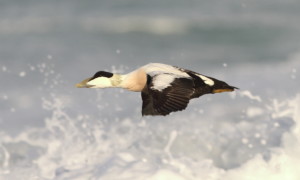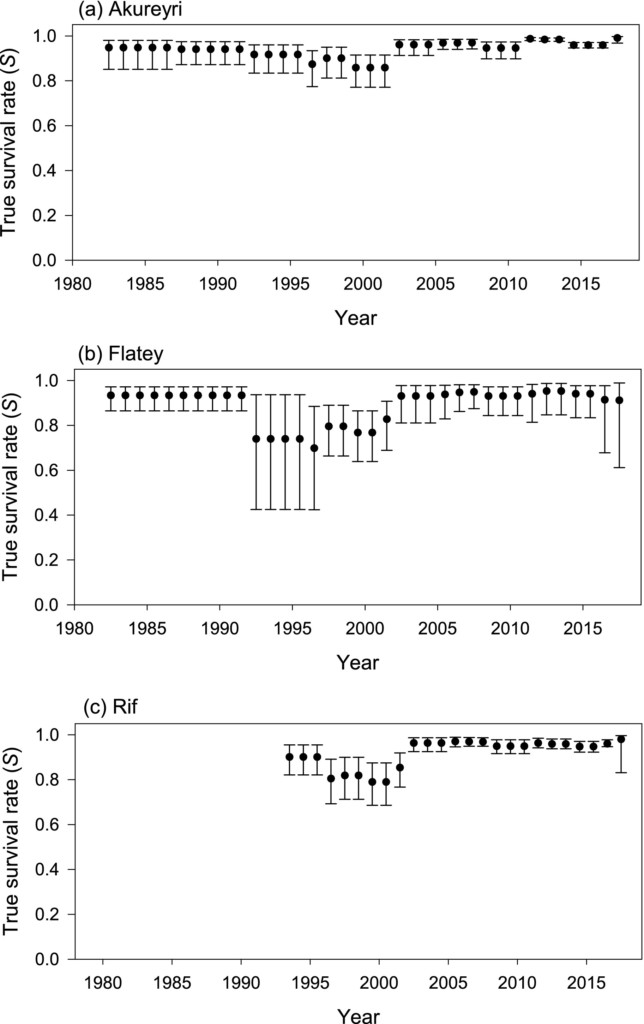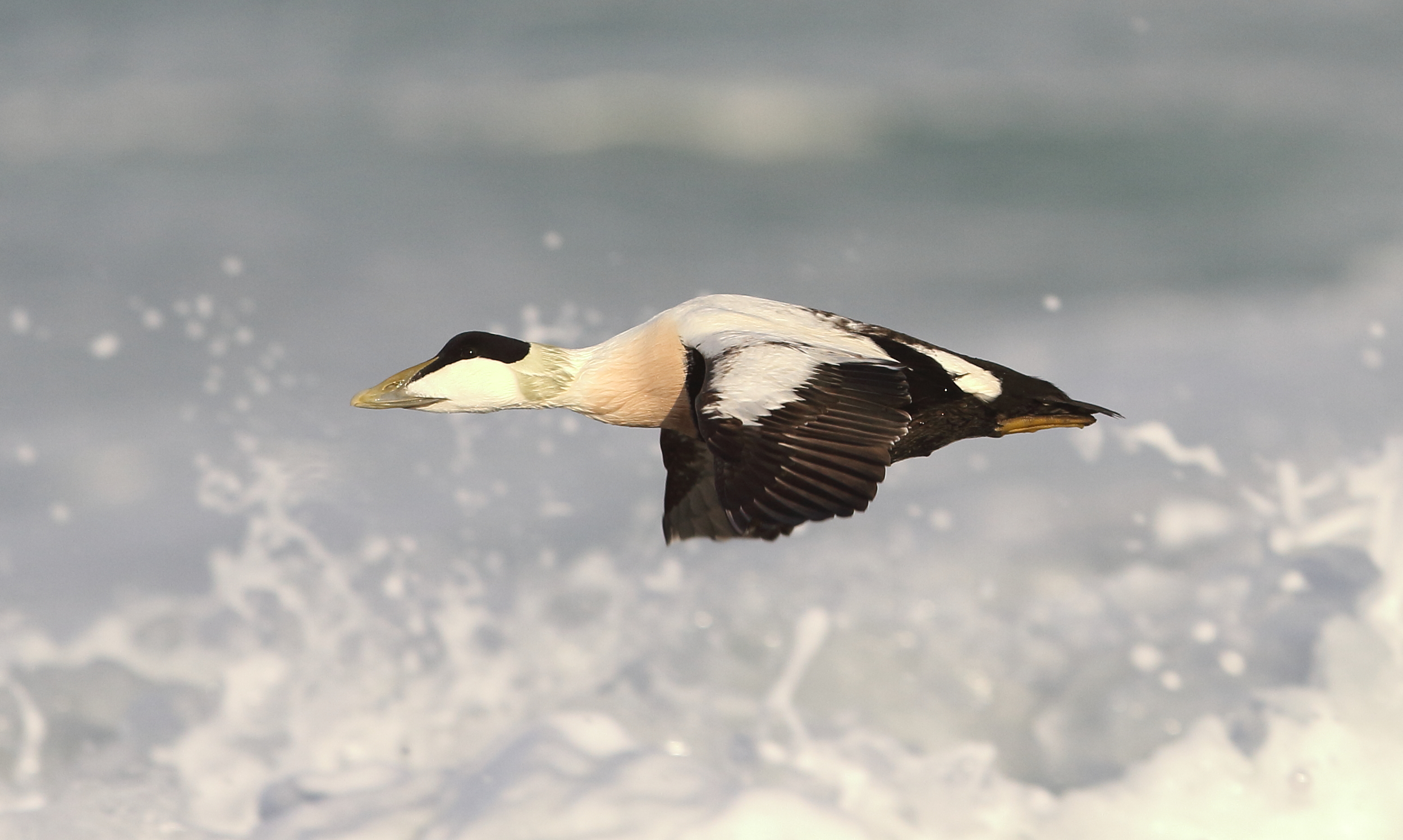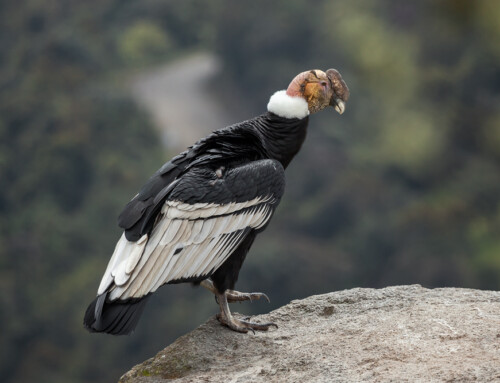 LINKED PAPER
LINKED PAPER
Long-term trends in the survival rates of adult female Common Eider Somateria mollissima at three colonies in Iceland. Wood, K. A., Thorstensen, S., Lúðvíksson, S. J., Brides, K., & Petersen, A. 2021. IBIS. DOI: 10.1111/ibi.12893. VIEW
In recent years, the number of Common Eiders (Somateria mollissima) has been steadily declining, prompting several European Union countries to change the conservation status of this duck species from ‘Vulnerable’ to ‘Endangered’. Ornithologists have identified numerous threats, such as increased hunting and predation pressure, rapid climate change and disease outbreaks. However, if you really want to understand the impact of these threats on population dynamics, you need to identify the most vulnerable life stage. In large-bodies species, such as the Common Eider, adult survival rate is often regarded as a crucial parameter (Öst et al. 2016). That is why an international team of researchers decided to estimate the survival chances of Common Eiders in several Icelandic populations.
Three colonies
Kevin Wood and his colleagues analyzed mark-recapture data from 3018 individuals (collected between 1985 and 2017), representing three breeding colonies: Flatey, Rif and Akureyri. The results indicated a mean annual survival of 91.6 percent, which is significantly higher compared to other populations in Norway (80%, Bårdsen et al. 2018) and the Baltics (72%, Ekroos et al. 2012). Although there are some methodological differences between these studies, the researchers attributed the higher survival rates of the Icelandic birds to several factors, including their recent protected status, lower predation pressure, and the higher food abundance.

Figure 1. Temporal variation in the mean annual true survival rates of adult female Common Eiders ringed at our three breeding colonies. Notice the drop in survival rates in the Flatey colony (middle graph).
Predator and prey
The favorable feeding conditions around Iceland might partly explain the high survival rate of Common Eiders. Whereas their conspecifics in other regions mostly rely on bivalves, Icelandic Common Eiders have a broader diet, including Common Whelk (Buccinum undatum), Northern Lacuna (Lacuna vincta) and Spider Crabs (Hyas arenarius). And while the Eiders are enjoying the lower levels of the food chain, they should not worry too much about what might eat them. The most dangerous predators – Gyrfalcon (Falco rusticolus) and White-tailed Eagle (Haliaeetus albicilla) – occur in low numbers, resulting in a low predation pressure. However, it is not all fun and games for the Icelandic Common Eiders. Birds from the Flatey colony experienced lower survival rates due to intensive fishing. Seabirds can become entangled in gillnets and drown (Zydelis et al. 2013). There is thus still room for improvement if we want protect the Common Eiders around Iceland.
References
Bårdsen, B.J., Hanssen, S.A. & Bustnes, J.O. (2018). Multiple stressors: modeling the effect of pollution, climate, and predation on viability of a sub-arctic marine bird. Ecosphere 9: e02342. VIEW
Ekroos, J., Fox, A.D., Christensen, T.K., Petersen, I.K., Kilpi, M., Jónsson, J.E., Green, M., Laursen, K., Cervencl, A., de Boer, P., Nilsson, L., Meissner, W., Garthe, S. & Öst, M. (2012). Declines amongst breeding Eider Somateria mollissima numbers in the Baltic/Wadden Sea flyway. Ornis Fennica 89: 81– 90. VIEW
Öst, M., Ramula, S., Lindén, A., Karell, P. & Kilpi, M. (2016). Small-scale spatial and temporal variation in the demographic processes underlying the large-scale decline of eiders in the Baltic Sea. Population Ecology 58: 121– 133. VIEW
Zydelis, R., Small, C. & French, G. (2013). The incidental catch of seabirds in gillnet fisheries: a global review. Biological Conservation 162: 76– 88. VIEW
Image credits
Top right: Common Eider (Somateria mollissima) | Marton Berntsen | CC BY-SA 3.0 Wikimedia Commons
Blog posts express the views of the individual author(s) and not those of the BOU.
If you want to write about your research in #theBOUblog, then please see here




